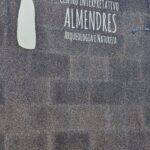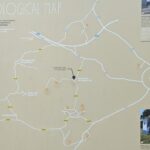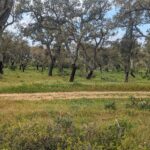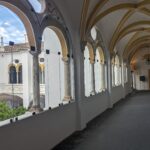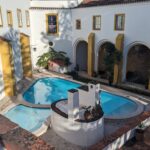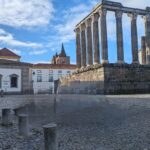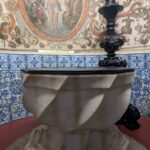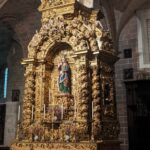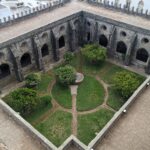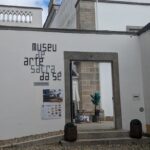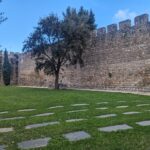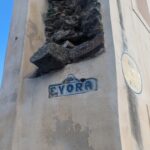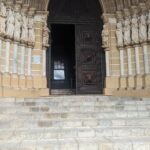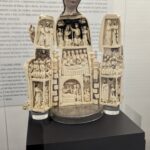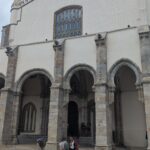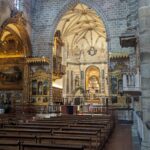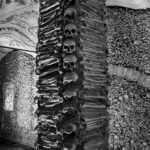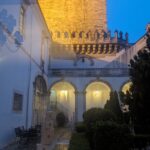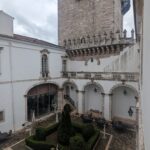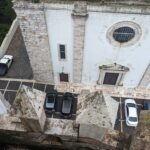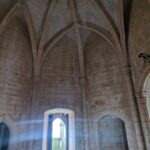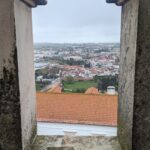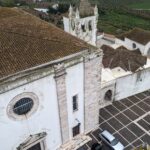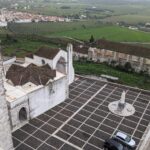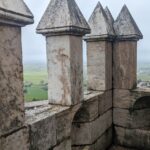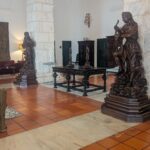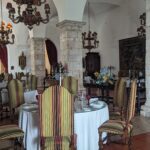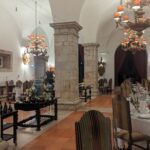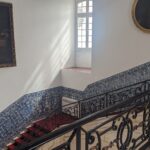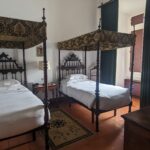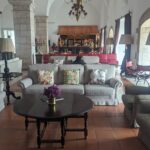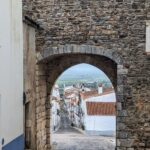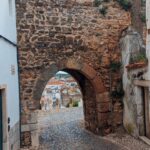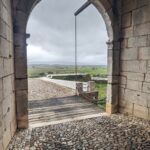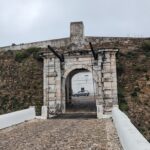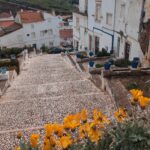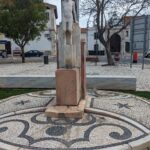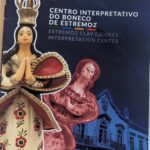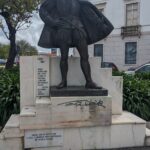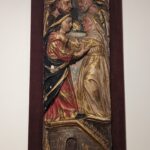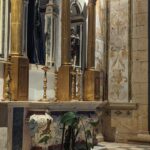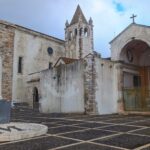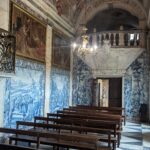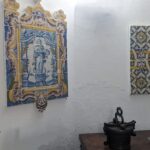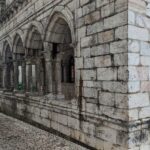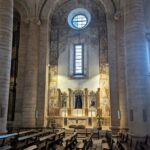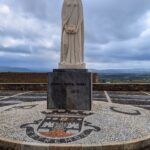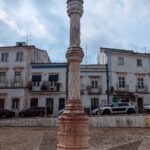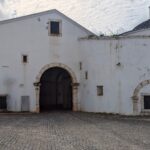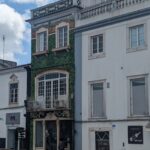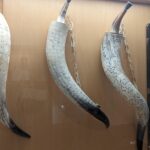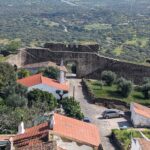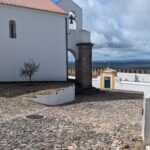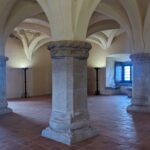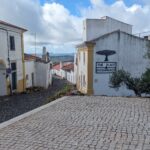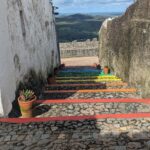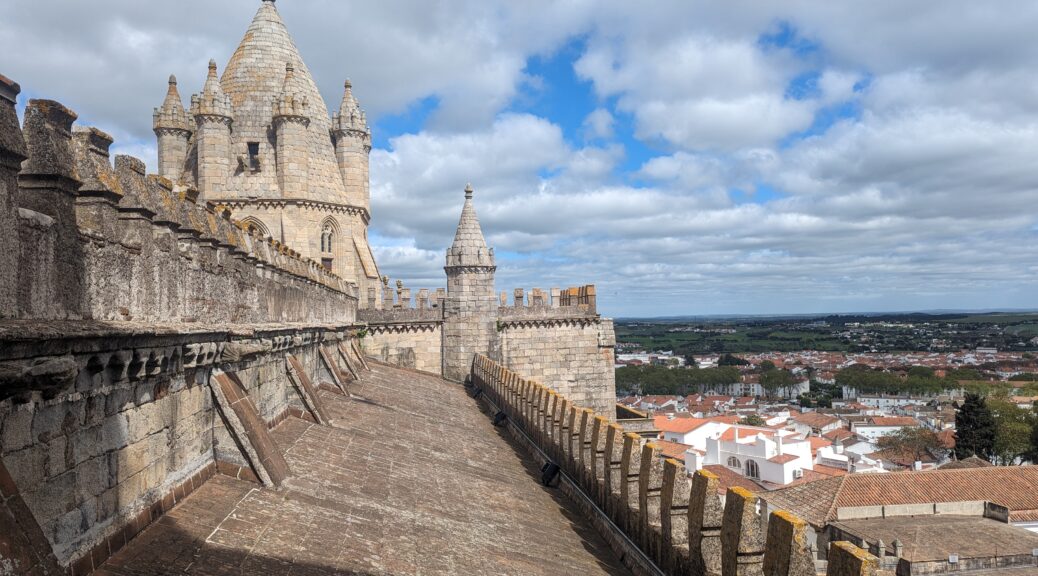
Evora and Estremoz, Portugal
Everyone in Portugal talks about Evora. It’s one of the things I’m asked frequently when meeting other ex-pats in Lagos. Have you been to Evora? Not yet.
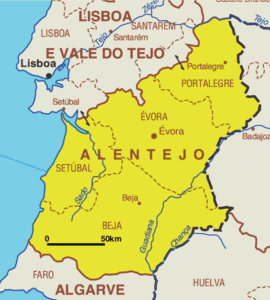
Well, it was time.
My well-used travel book, 1000 Places to See Before You Die, has a page on Evora. It also recommended the “pousadas” or historic hotels of Portugal. These are old convents or castles. I used the Pousadas de Portugal site to reserve the Hotel Pousada Convento Évora, a 15th century convent.
I also used the site to book the 13th century castle in Estremoz. The book listed a different site than what I found with just an internet search, but also Pousadas of Portugal. They both offer the same hotels, possibly the .com site is just easier for international visitors?
Both towns are in the Alentejo region of Portugal. The interior gets very hot during the summer so I wanted to visit before the temperatures made it unpleasant to be outside.
Megaliths of Evora
On the drive to Evora, I stopped at one of the “megaliths of Evora”. Southwest of town is the Almendres Cromlech.
- A megalith is “a very large stone used in various prehistoric architectures or monumental styles, notably in western Europe during the second millennium BC”.
- A cromlech is a megalith construction made of a circle of standing stones.
- A dolmen is a single-chamber megalith tomb.
I didn’t need to know this before visiting but it helped explain what I was seeing.
Almendres has what they call an “interpretive center”. However, it just consists of about a dozen signs outside about the area, a map, information on the history of the site, and local flora and fauna. It is believed to be not just the oldest megalith in Portugal but the world, even older than Stonehenge at about 5000 years old. After the interpretive center, the cromlech is 4km down a very rutted one lane road. I really didn’t think it was worth the drive.
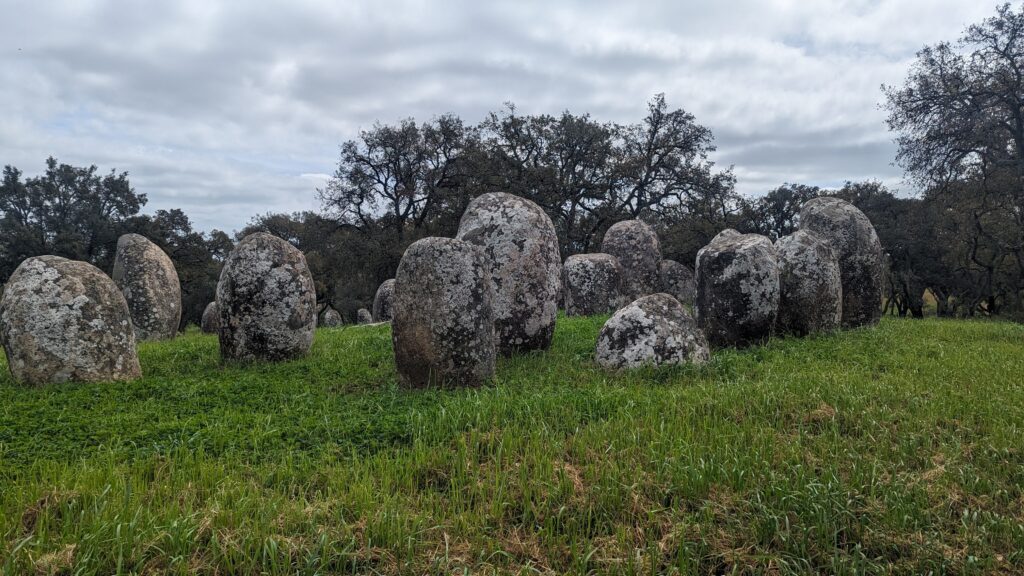
I had some issues with my GPS despite having the entire map of Portugal downloaded. So I didn’t find the Dolmen of Zambujeiro or the Barrocal Dolmen and just headed to Evora after my stop at Almendres Cromlech. There are many other megaliths in the area. I’ll make an effort to see them all when I return to Evora.
Evora
There is so much to see in town. I spent a busy 2+ days, and could have stayed longer. I live in Portugal now, though, so I can I can easily return and definitely plan to.
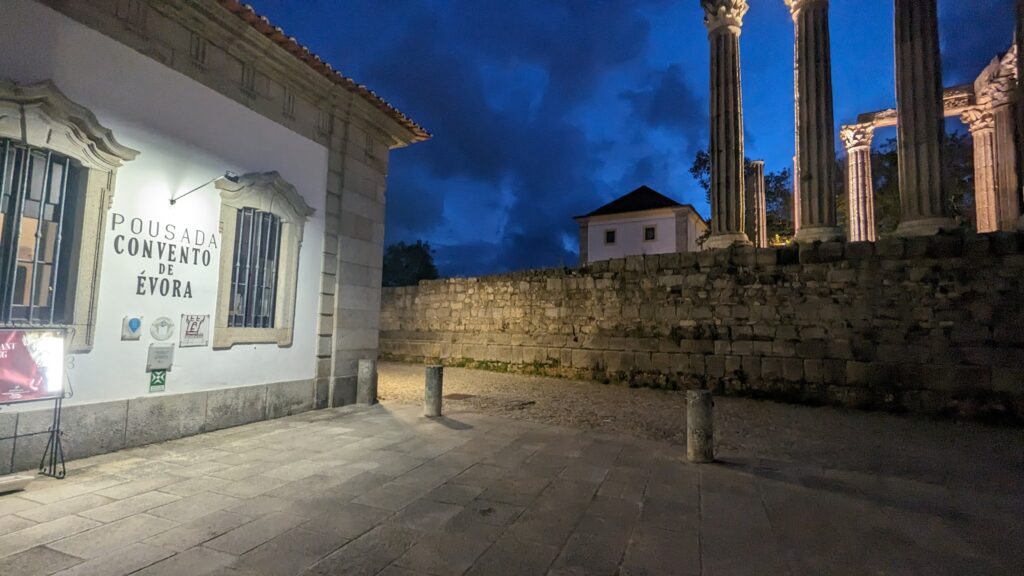
The Pousada Convento de Evora is gorgeous. All the common areas, the restaurant, the courtyard are beautiful. The staff are all friendly and very helpful. It is centrally located in the old walled town, designated a UNESCO World Heritage site in 1986. I was able to walk to all the sites easily.
Attractions
- The Roman temple of Evora was built in the 1st c, and declared a UNESCO World Heritage site. It is the oldest building in Evora and was restored in the 19th c. The ruins were right outside my hotel. They are beautiful lit at night.

Roman temple ruins - Cathedral of Evora has a combination ticket to visit the tower/terrace, the monastery, cathedral, and sacred art museum, only €5.00. The roof offers some of the greatest views of town. The gentleman at the ticket desk was quite helpful, telling me to start with the climb up the tower and seeing the terrace. Back downstairs, I went through the monastery, seeing the walled cloister and into the gorgeous cathedral. I visited the Museu de Arte Sacra da Se at the end of my visit, it’s accessible from the cathedral.
- Igreja de Sao Francisco and the Capela dos Ossos is another beautiful church and museum. A single ticket costs €6.00 to visit the Chapel of Bones, museum, terrace (more great views!) and their nativity collection.
- The aqueduct and city walls are worth exploring. There are many gates and other interesting ruins around the town.
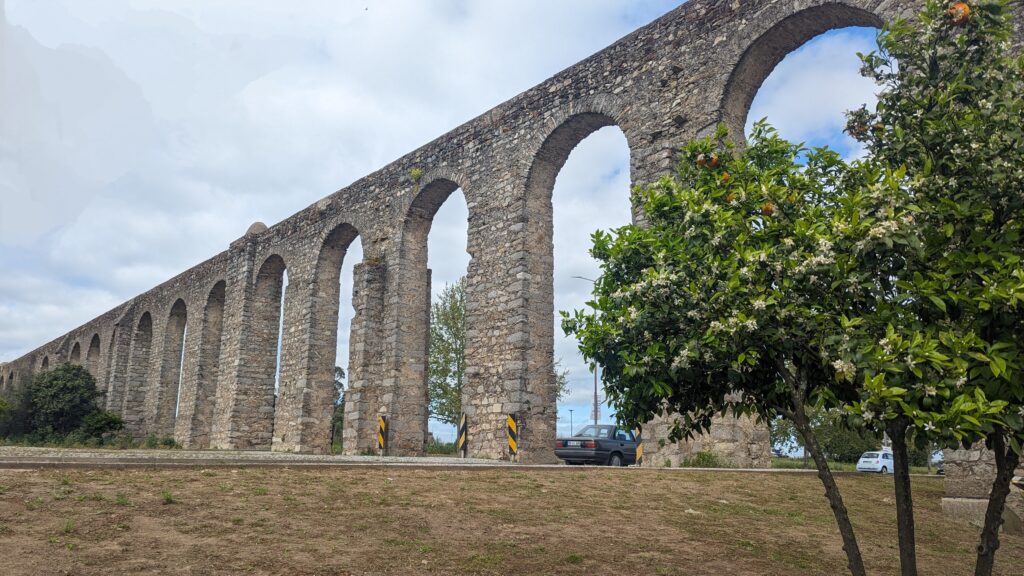
Aqueduct - Museu de Evora or Museu Nacional Frei Manuel do Cenáculo was just out the door of my hotel, on the plaza with the Roman Temple. This amazing museum is a 17th c. Bishop’s palace that was built on the ruins of a 1st c. BCE Roman Forum. In the 8th c. there were Islamic period homes. There are artifacts and exhibits from all the periods; granite and marble city crests, grave markers from the Roman period to tomb coverings of bishops, ruins of columns, many Moorish ceramics and coins, and religious art and artifacts. There are open areas showing archeological digs. A really excellent museum.
- I also stopped in briefly to the small, free Museu de Carrugens, or museum of carriages. It’s located just behind the Cathedral.
- Museu and Igreja da Misericordia is worth seeing for the stunning tiles and gold leaf altar. What a beautiful church.
- The Igreja de Santa Antao, from the 15th c, on the Praca de Giraldo seems quite plain compared to the other churches, without the blue and white tiles. But it has a beautiful gold altar, huge columns, a vaulted ceiling, and some great frescos.

Igreja de Santa Antao on Praca do Giraldo - Praca de Giraldo is the main square in town and I walked through multiple times going back and forth to other sites. Santa Antao church is on the square, a beautiful fountain, the tourism office, and plenty of shops and restaurants.
- Palacio de Don Manuel, or Royal Palace of Evora, is located in the Jardim Publico de Evora. The original palace dates from the 14th c. during the reign of King Alfonso and was expanded under King Joao II. King Manuel added the gardens and ordered the construction of the Ladies’ Galleries. This is only part of the palace still standing. I walked through the gardens Monday but returned to see the palace and the small history museum (free).
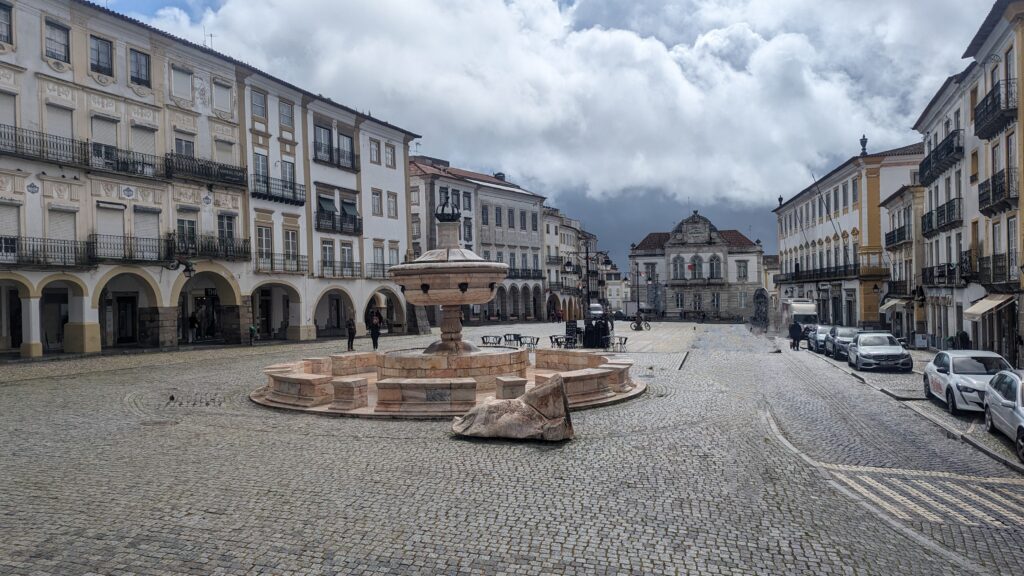
Praca do Giraldo
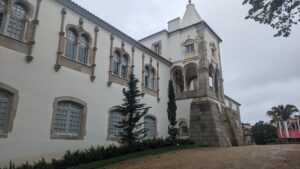
- Wednesday before leaving for Estremoz, I visited Palacio Cadaval and Igreja dos Lóios. They are also right outside the convent. The church was part of the Convent of the Order of Saint Eligius. Why Loios? “Lóios is the corrupted form of the Portuguese word for Eligius.” The church is also called Saint John the Evangelist. The palace is still the home of the Dukes of Cadaval family. Both the palace and private chapel were built in the 14th c. on the ruins of the 8th c. Moorish castle. I purchased a combination ticket in the church then visited the museum/art exhibition in the palace. Most of the palace is closed to the public. The chapel, like Igreja da Misercordia, is also covered in the beautiful blue and white, or azulejo, tiles.
Restaurants

- Pateo I had skipped lunch while sightseeing and really didn’t want to wait until 1930 when many restaurants opened for dinner. So I was looking for a place the first night to have an “early” dinner and I found this place when walking around around 1830. Service was good and I had the stewed pork and some grilled vegetables. Very nice outdoor seating.
- Fianlho I had the excellent ‘Stonebass with Shrimp in Tomato Rice Alentejo’. I looked up stonebass and found it was a type of grouper, then asked to see the Portuguese menu before I left: Arroz de Garouper Gambas. The restaurant was recommended by the concierge at the hotel, the food was delicious and has great service, too.
- The hotel offered a very good breakfast buffet and serves dinner as well.
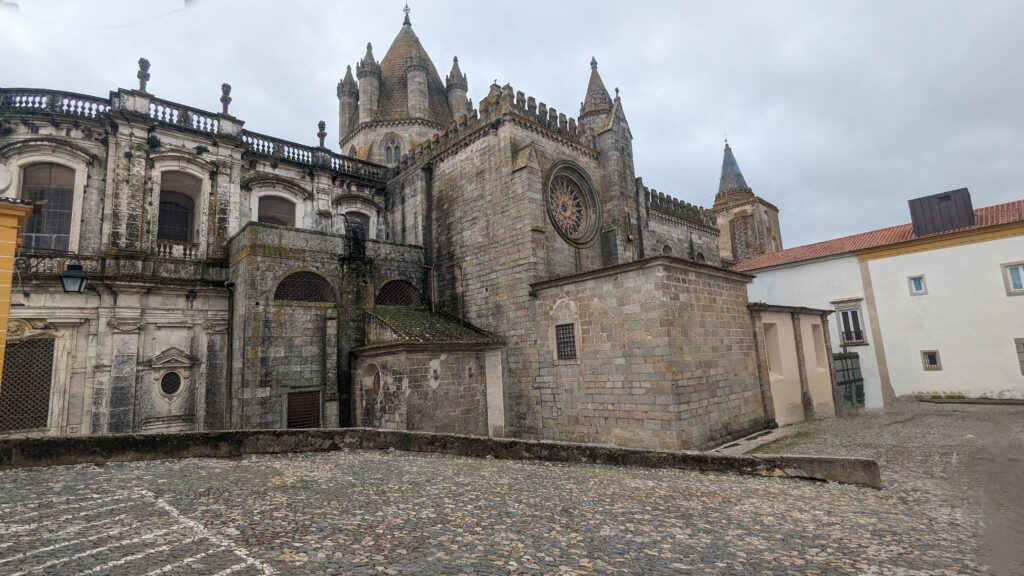


Estremoz
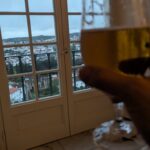
The Pousada Castelo Estremoz, or Pousada da Rainha Santa Isabel, is in Old Town, inside the city walls. Parking is easy, unlike in Evora. The entire hotel, the castle, is wonderful. From 6 meter ceilings, azulejo tiles covering the stairwell, all the amazing art and furniture in the common areas and hallways, to great views over Lower Town, it’s beautiful.
I loved walking around the hotel. The first morning I got up and walked up the stairs to the tower; they start in the courtyard before going inside the tower. There are great views all the way up, with a number of balconies and viewing areas.
They also offered a great breakfast. I had dinner here my first night, lamb and roast potatoes. Great food and a lovely, huge hall to dine in. I really loved this hotel, so have a hard time limiting the photos!
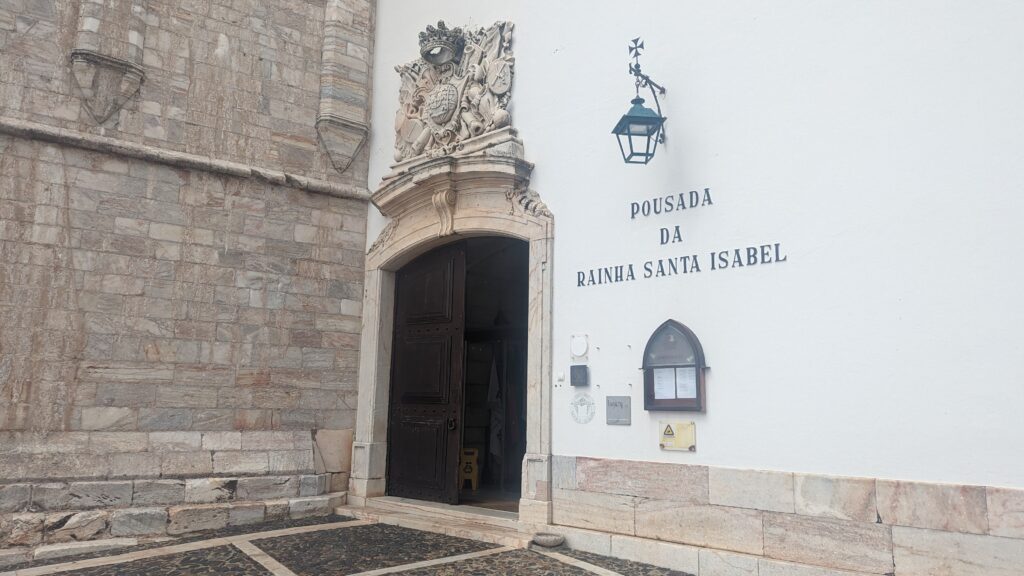

Attractions
- Part of the castle, but with the entrance around the side, is the small private Capela da Rainha Santa Isabel. The hours are different than what is listed online (and the hours vary by what site you are checking, too). I asked at the front desk, they said the museum maintains the site and they unlock the door every day at 0900. Beautiful blue and white tiles.
- Right across from the castle is the small Museu Municipal Prof. Joaquim Vermelho. It is located in a 13th c. building that has been used as an asylum, royal school, and a boys school. There are two small rooms containing handcrafts from local craftsmen, three rooms with furniture from a local home, a reconstruction of a “typical” kitchen, living room and bedroom, other rooms with tiles, religious artifacts, Estremoz stoneware and three rooms of the “bonecos” and bonecos workshop.
- It’s a great walk to Lower Town from the castle. Straight down Rua da Rainha Santa Isabel through Porta do Sol, then a flight of stairs to Lower Town. I also visited Porta de Santarem, Porta de Evora, part of the outer walls with a drawbridge, and the huge Porta dos Currais. This is a large tunnel through the outer walls. All worth seeing!
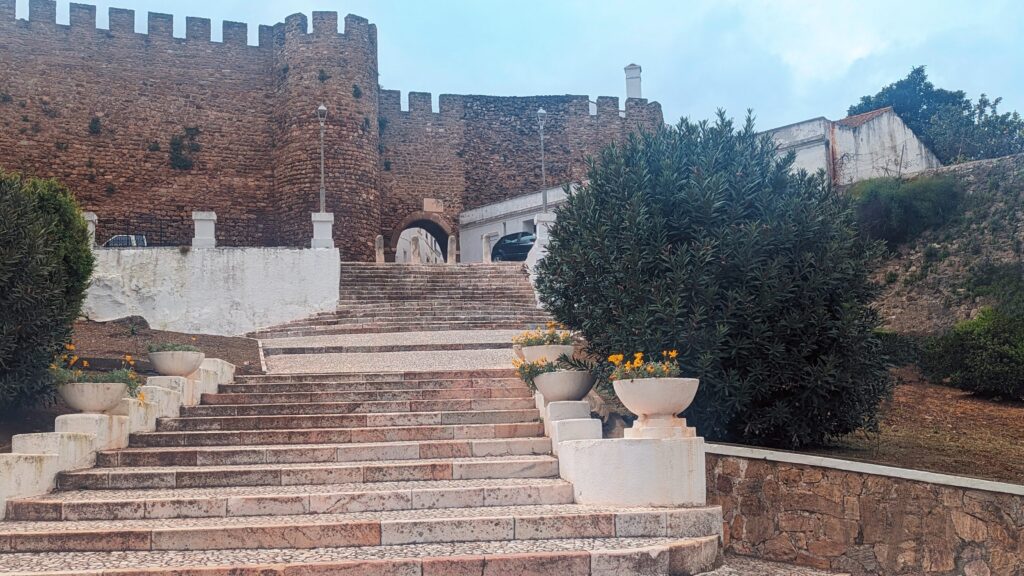
Rue da Rainha Santa Isabel to Porta do Sol
- Igreja de Santa Maria is on castle hill, just outside the Pousada. There are many, many churches in town and I really didn’t see any of them. The weather when I arrived Wednesday was windy and rainy, so I just stayed in Old Town, visiting this church and the museum. There are some great chapels and frescoes in the church.
- After visiting Porta dos Currais, I wandered down the hill. I saw the WWI monument, Monumento aos que morreram pela Pátria, walked past Igreja de São Francisco Antigo Convento e Igreja de São Francisco, unfortunately not open. I stopped at Lago do Gadanha and walked through the public gardens on the way to the main square, Praça Luís de Camões.
- I stopped for a drink on the square and saw a sign for the Centro Interpretio Bonecos de Estremoz. Bonecos are the clay figurines, they were declared a UNESCO Intangible Heritage in 2018. The museum is in Portuguese only, so I took photos with my DeepL to read all the informational signs. Fortunately, the two videos, on production of the dolls or puppets (the terms were used interchangeable on the signs), had English subtitles. €2.00 entry, despite having to read the translated signs on my phone, it’s a very interesting center and I definitely recommend.
There is plenty more to see in both towns and I plan on returning.



Evoramonte
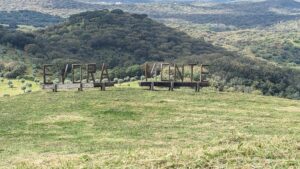 On the drive home to Lagos, I stopped by the Castelo Évoramonte. The town dates from the 12th c. The fortress was begun by Duke Jaime around 1531. According to the castle brochure, the design is “unprecedented” in Portugal and also considered unique in 16th c. military architecture. It has 3 stories, one with an exhibit of art, another with informational signs. The Braganza family had ties, or binds, to the king, so there are interesting large knots displayed on the facade. The terrace offers wonderful views of the settlement walls and town of Evoramonte. I walked around old town before going back to my car where I had parked down the hill.
On the drive home to Lagos, I stopped by the Castelo Évoramonte. The town dates from the 12th c. The fortress was begun by Duke Jaime around 1531. According to the castle brochure, the design is “unprecedented” in Portugal and also considered unique in 16th c. military architecture. It has 3 stories, one with an exhibit of art, another with informational signs. The Braganza family had ties, or binds, to the king, so there are interesting large knots displayed on the facade. The terrace offers wonderful views of the settlement walls and town of Evoramonte. I walked around old town before going back to my car where I had parked down the hill. 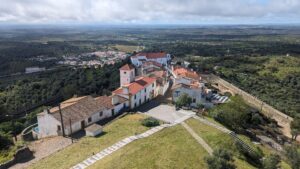
Note: my GPS wanted me to take a right off the road up what looked like a goat trail. It was blocked off but I wouldn’t have driven up there regardless, and just left the car in the parking area to the left of the road. While walking around the castle and walls, however, there is parking outside the opposite gate where I entered. If I had kept driving straight, I am sure I would have ended at this gate.

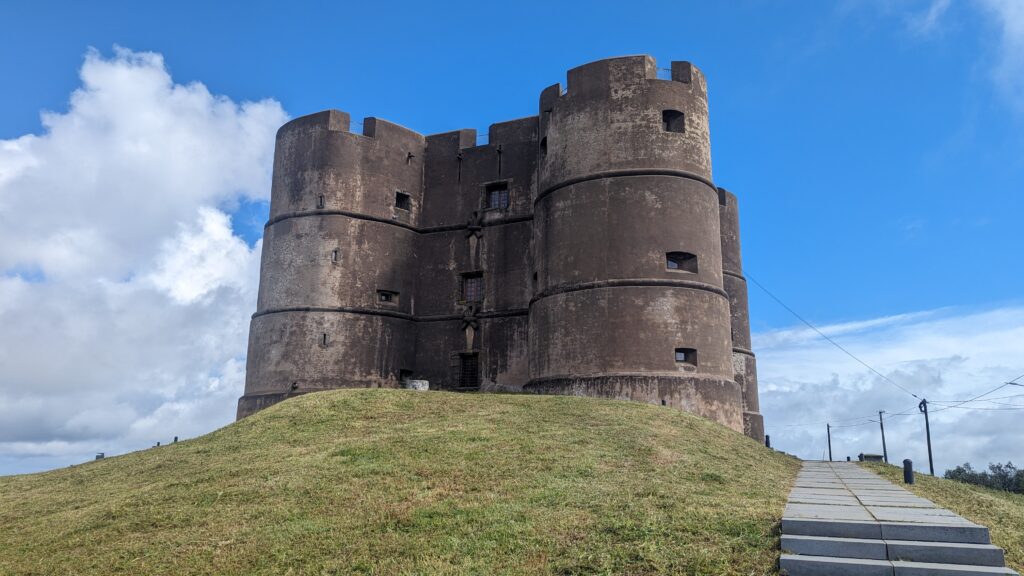
** All photos property of Lisa, not to be copied or reproduced **
